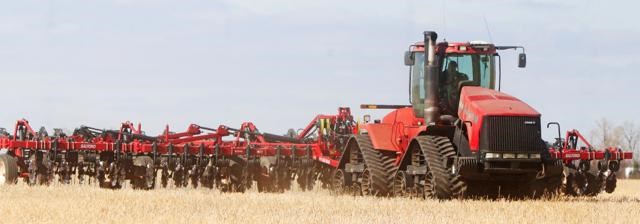Harvesting in southeast Saskatchewan is nearing full completion for 2020, with 98 per cent of the crop combined, up from 96 per cent the previous week, ahead of the five-year average of 84 per cent done by this time of year.
Provincially, the harvest is 96 per cent done, up from 89 per cent the week before. In the Weyburn crop district (2A), harvest is 99 per cent done, and in the Radville-Lake Alma area (3ASE), it’s 100 per cent completed.
In the southeast region, most of the crops remaining to be done are later-maturing soybeans (93 per cent combined, six per cent ready to straight-combine), flax (89 per cent combined, eight per cent ready to straight-combine, two per cent still standing) and canola (97 per cent combined, two per cent in swath, one per cent ready to straight-combine).
Farmers are continuing post-harvest field operations, and with it being so dry, farmers are working low areas that are normally too wet.
There has been some post-harvest weed control, but in many areas weeds are not actively growing due to the lack of moisture.
The following are estimated crop yields in the southeast region, as of Oct. 5.
Winter wheat had an average estimated yield of 41 bushels per acre (bu/ac); fall rye, 42 bu/ac; hard red spring wheat, 48 bu/ac; durum, 45 bu/ac; other wheat classes, 51 bu/ac; oats, 74 bu/ac; barley, 62 bu/ac; flax, 26 bu/ac; canola, 35 bu/ac; soybeans, 26 bu/ac; and peas, 38 bu/ac.
Canaryseed had yields of 1,349 pounds per acre; mustard, 1,189 lbs/ac; lentils, 1,682 lbs/ac; and chickpeas, 1,296 lbs./ac.
Spring wheat grades at this time are reported as 70 per cent 1 CW, 24 per cent as 2 CW, and six per cent as 3 CW.
Most of the region saw no rainfall, with trace amounts or no rain reported in the 2A and 3ASE crop regions.
Cropland topsoil moisture is rated as 11 per cent adequate, 41 per cent short and 48 per cent very short. Hay and pasture land topsoil is rated as seven per cent adequate, 37 per cent short and 56 per cent very short.
High amounts of precipitation are needed this fall and winter to provide adequate moisture in the spring for the seeding of crops.
Most of the crop damage reported this week was caused by wind blowing swaths around and shelling out seeds, waterfowl and symptoms caused by lack of moisture throughout the growing season.
Farmers are busy harrowing, hauling bales and moving cattle.




